Inspired by Jamaican and African culture, freeform dreads are an expression of independence and freedom and have great cultural meaning.
Moreover, these locs are authentic, quite low-maintenance, and budget-friendly, as you won’t need any styling products to build them or to keep them in shape.
So let’s discover what freedom locs are, how to pull them off, and how to take care of your hair during this long journey.
What are Freeform Dreads?
Freeform dreads are locs you can achieve without manipulation by allowing your hair to naturally get tangled after you previously twisted it. There are multiple ways to get these dreads: you can use a sponge for coarse hair that you will rub against your strands and roots or manually twist your strands.
What Are Semi-Freeform Dreads?
Semi-freeform dreads are like the middle path between wild, natural dreads and the tidy ones. They look authentic but aren’t too messy. Imagine having locs where you still comb the roots and wash your hair often. It’s perfect if you want that locs vibe without going all the way. Give it a shot if you’re curious; it might be your style!
How Long Does It Take For Freeform Dread?
Curly hair usually locks faster than looser curls. On average, hair starts to lock in a few weeks. But full freeform locs might need up to two years. Want quicker, defined locs? Maybe try styled or semi-freeform ones.
How to Maintain Freeform Locs: Quick Tips
Entering the loc community with freeform or semi-freeform locs? Here’s a handy guide to keep them healthy and vibrant:
Regular Cleansing: Contrary to popular belief, freeform locs need care. Wash your scalp and roots routinely to dodge build-up and ensure robust roots, preventing loc breakage.
After-Wash Ritual: Minimize frizz and stray hairs post-wash. Palm roll your locs or wrap any loose hair neatly around the loc to maintain the structure.
Root TLC: Especially vital for semi-freeform locs, regularly separate your locs at the roots. Neglecting this might lead to your locs merging together, creating a tangled mess.
Stay Hydrated: Moisturized locs mean less breakage and frizz. Sleep with a hair cover, opt for non-cotton towels and pillowcases, and use natural products crafted for loc health.
Unrivaled Freeform Dreads Styles
Discover more about freeform dreads and find out the best ways to get them by following the examples and tips provided below!
1. Ombre Freeform Dreads

Nowadays, more and more Afro-American men and women stand against beauty standards, normalizing and embracing their natural hair by reaching back to their ancestral roots and the historical significance of dreadlocks.
To replicate this look, you will first need to dye your hair in a color close to the natural shade. As your hair starts growing, it will naturally create a stunning ombre look.
2. Half Up Half Down

Getting such long freeform dreads will take you years, so arm yourself with patience, since this journey requires full commitment.
Also, in most cases, the hair forms the dreads naturally, and soon you won’t be able to see the hairline. However, if you go for a thin headband that pulls the locs to the back, your facial features will be better revealed.
3. Ultra Long Dreads

Once you have passed the most annoying stages of naturally building your locs, you will love the way your thick pieces have formed.
To end up with such a shape, you must be able to control the frizz and also keep the scalp moisturized, as it might tend to get flaky. Use a shampoo that leaves no residues and oils for scalp hydration.
4. Dreads with Blonde Tips

When you want your hairline to be visible, you can create an undercut in the back and on the sides. Also, if you had blonde hair when you started your freeform locs journey, over the years, you will end up with blonde tips that will look cool and natural.
However, you can also style these whenever you want, by dyeing the ends in a color that suits you and works with your whole look.
5. Thick Natural Dreads

If you have naturally curly hair, your locs will get this shape faster than it happens for people with straight hair. These pieces look matured, so if you crave this shape, remember that you will need a lot of patience.
It might take you up to two years to achieve this shape.
6. Semi-Freeform Dreads
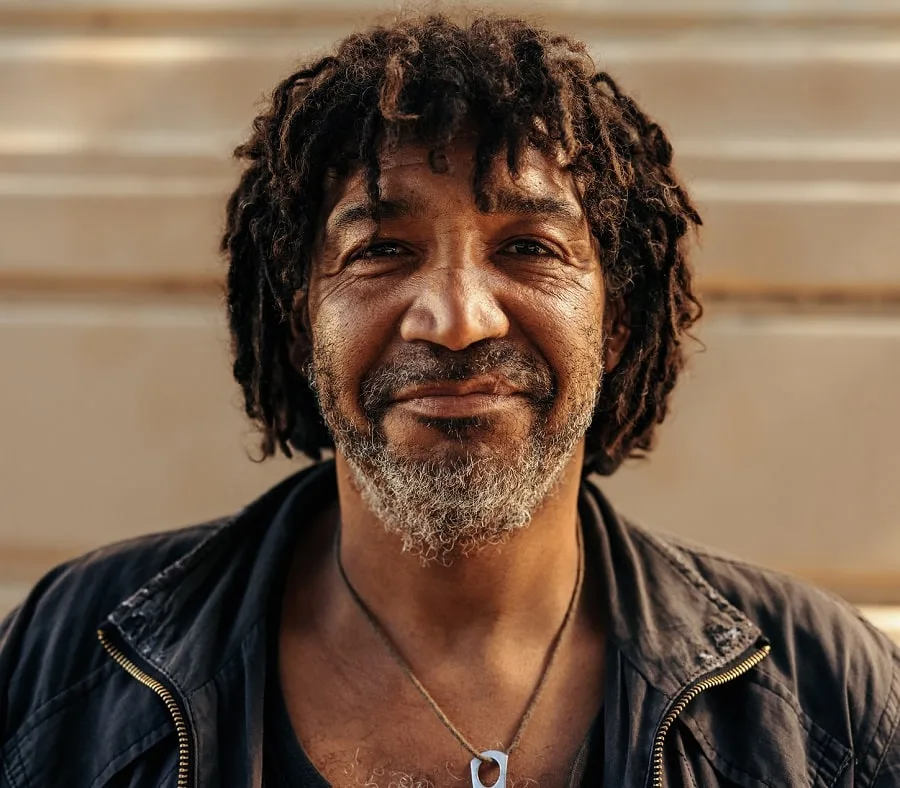
To get this amazing shape for your locks, you can use the sponge technique. Rub it against your hair until you see the form you desire.
Also, don’t obsess about getting matured locs, as the journey is long, and spreads over years. Enjoy the ride because every few weeks, as your hair is growing, you will have a new hairstyle to deal with.
7. Blonde Copper Dreads

For someone that is experiencing the early stages of dread forming, here are some tips you need to follow right from the beginning. Rule no.1 and the most important is to wash your hair, no matter what anyone else is saying!
Otherwise, you will get buildups and your hair will look dirty and cumber your dread journey. Get a consistent washing routine so you can prevent getting flaky pieces on your locs.
8. Back Bun
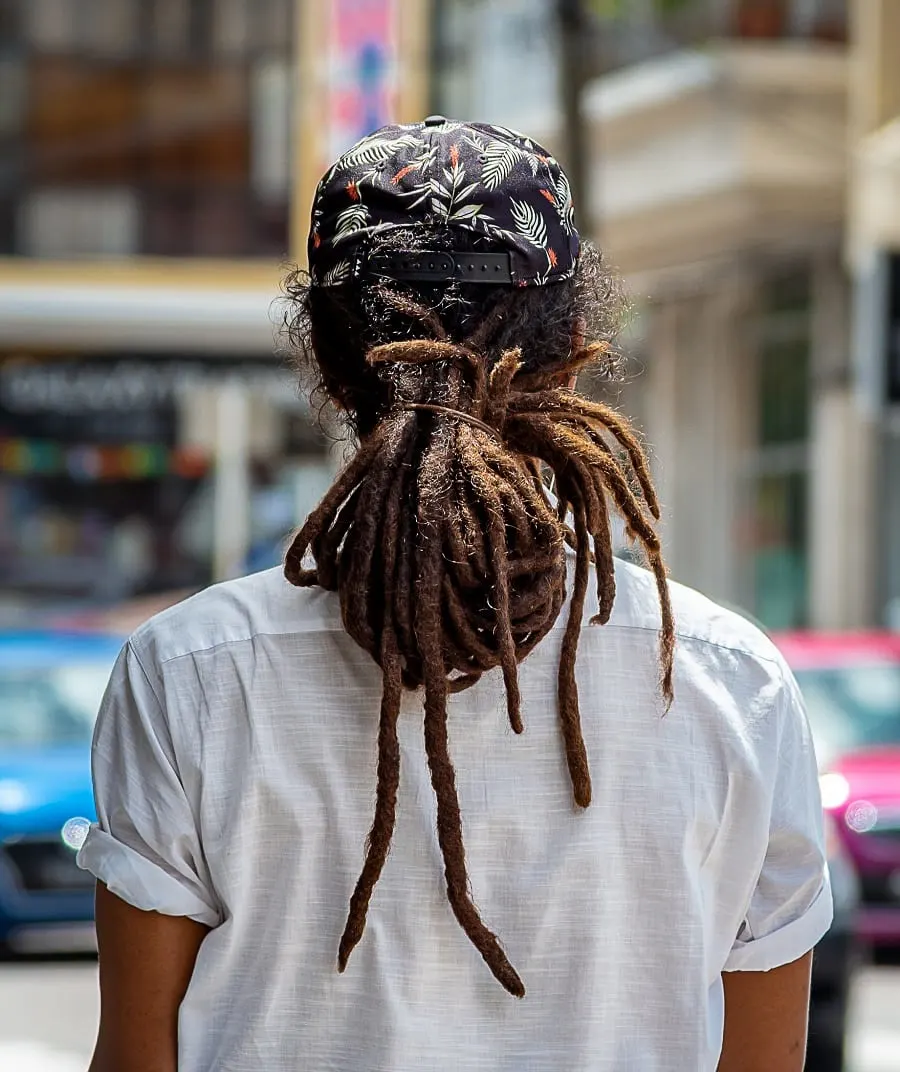
As your twists get longer, the gravity will kick in and your locs will eventually drop. In the beginning, they will all be up, in all directions and you will probably look like The Weeknd.
After they finally drop, you can easily style them, pinning the locs in a pony, rolling them in a bun, and wearing caps.
9. Top Updo with Flowers
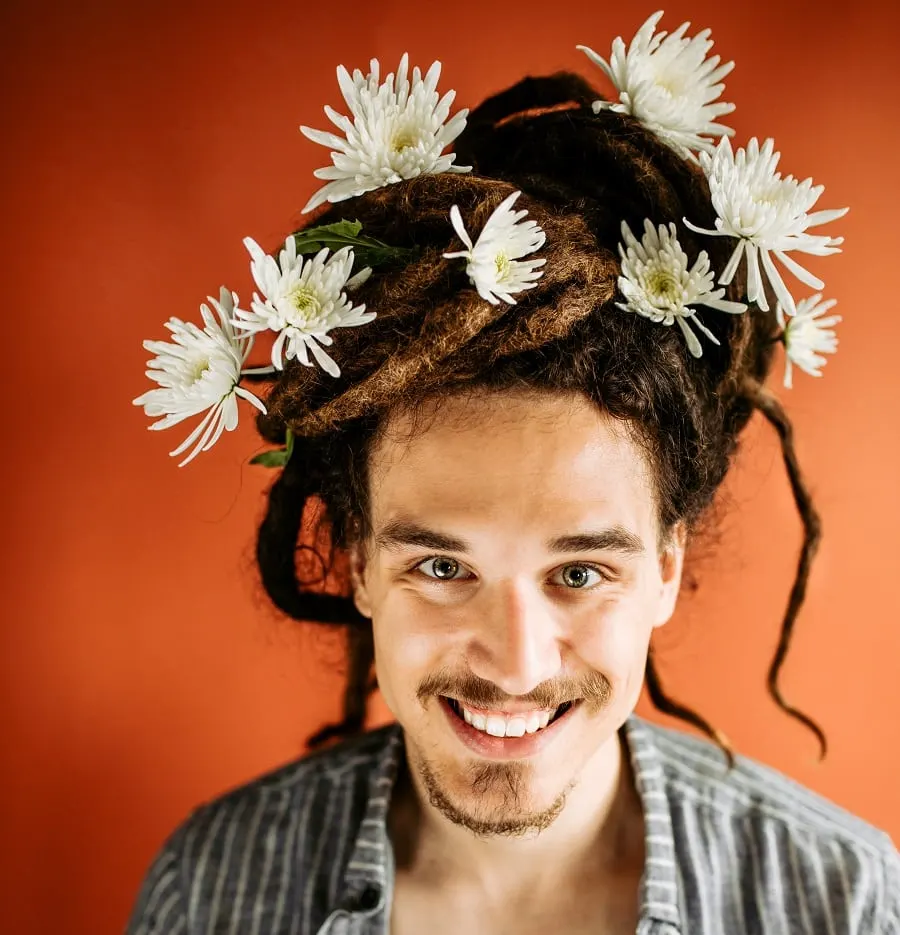
When you have freeform dreads that are this long, you have all the reasons to feel proud of yourself.
Also, you can do all the crazy hairstyles you want, like rolling them on top of the heads or creating a large bun that you can decorate with flowers.
10. Two Ponytails

During your journey, you might feel that your dreads develop their personality as they grow all over the place.
If you want to give them a specific direction, then you can use hair elastics and style two top ponytails and a middle part.
11. Two Braided Locs

To replicate this hairstyle with locs, you can unevenly dye some pieces in a brown-blonde color and style some lighter pieces that will act as highlights.
Part them in the middle and braid two ponytails that will have a lot of thickness and volume. Secure with hair elastics.
12. Dreads with Undercut
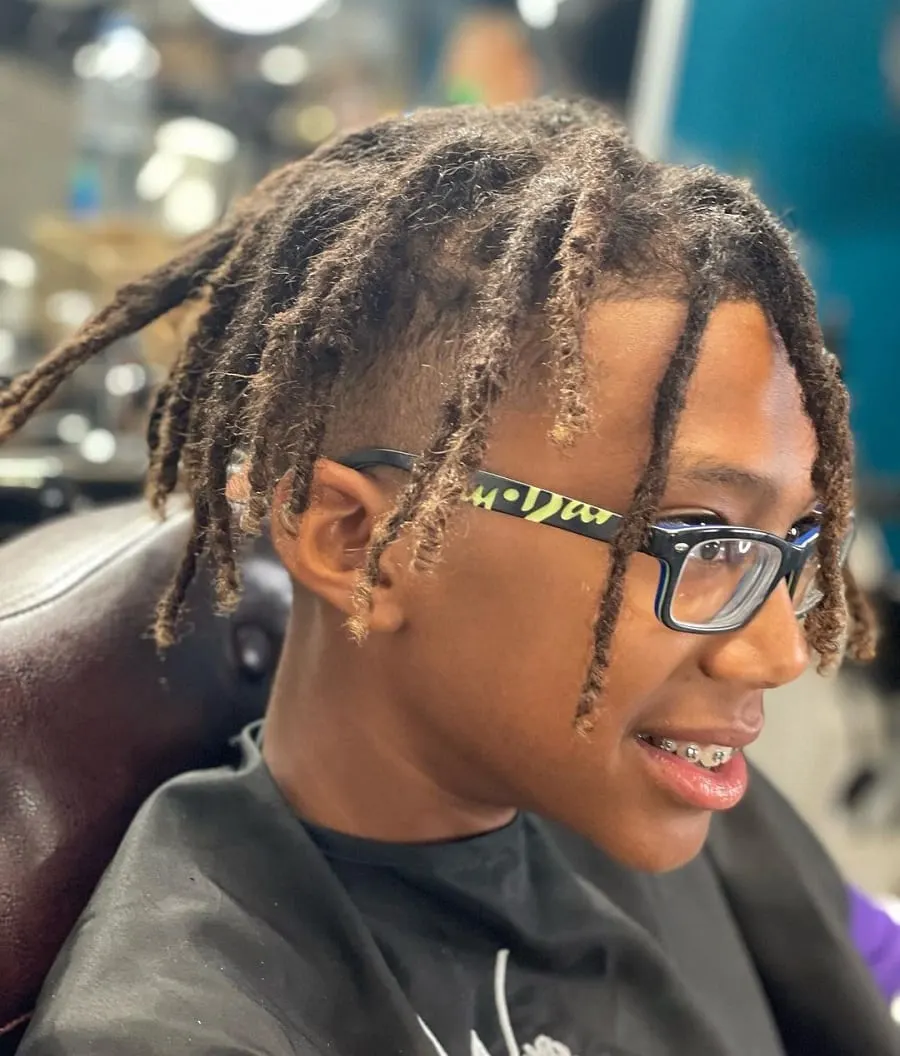
Once your hair starts growing and your locs gain length, you will need to redo the roots area. To do so, you will need to occasionally retwist the roots so that you won’t get too much frizz or see a loctician.
It’s not mandatory to do freeform locs all over the head. Once you have the desired length, you can go get your first undercut.
13. Frizzy Locs

Another thing you need to do when you want freeform dreads is to throw away all your hair gels, jams, or other hairstyling products.
Instead, you will use shampoo to wash your hair and clean the twists with cold water because it will seal the moisture. Also, to get less frizz or deal with the hair that stick out, roll those strands and twists in your hand.
14. Side Swoop
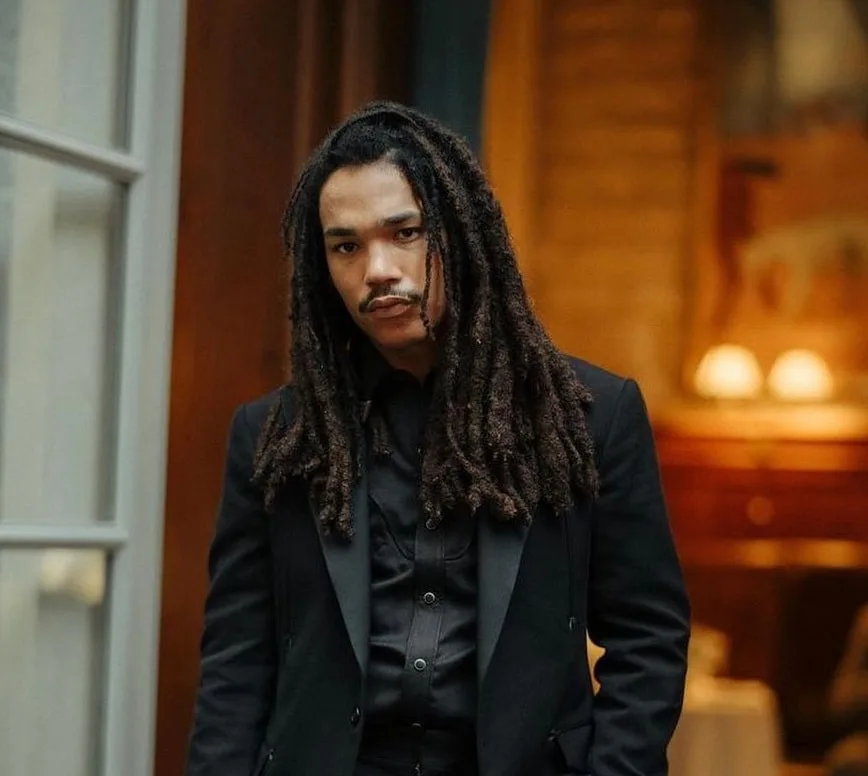
These Afro-freeform dreads have thickness and a really great shape. As you can see, this hairstyle works impressively with all types of outfits, including elegant suits. Even black celebrities like this dread style.
Remember that there is no such thing as perfect dreads and when going for freedom shapes, there won’t be two dreads that look the same.
15. Rolled Back Bun
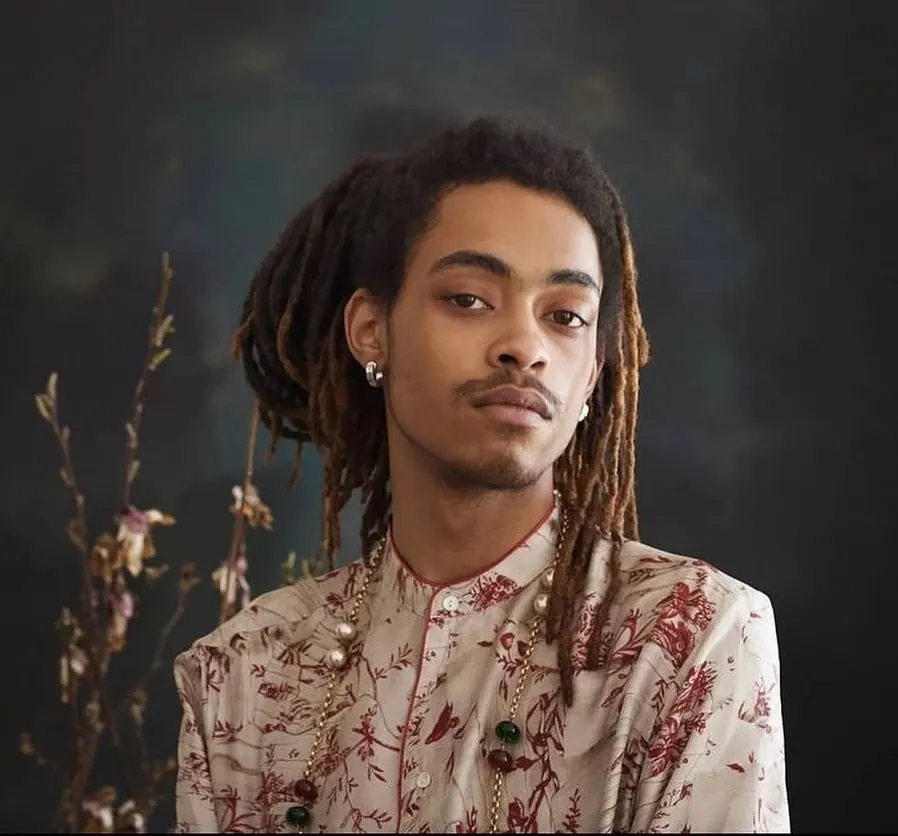
One of the greatest advantages that come with these locs is their low maintenance. Also, the hairdo is incredibly budget-friendly since you don’t need to buy any styling gel, jams, or other products, tools, or salon treatments you usually use.
So, no more moisturizers, leave-in conditioners, or masks. The main goal is to let your hair freely form the looks without any adjuvants.
16. Rastafarian Locs
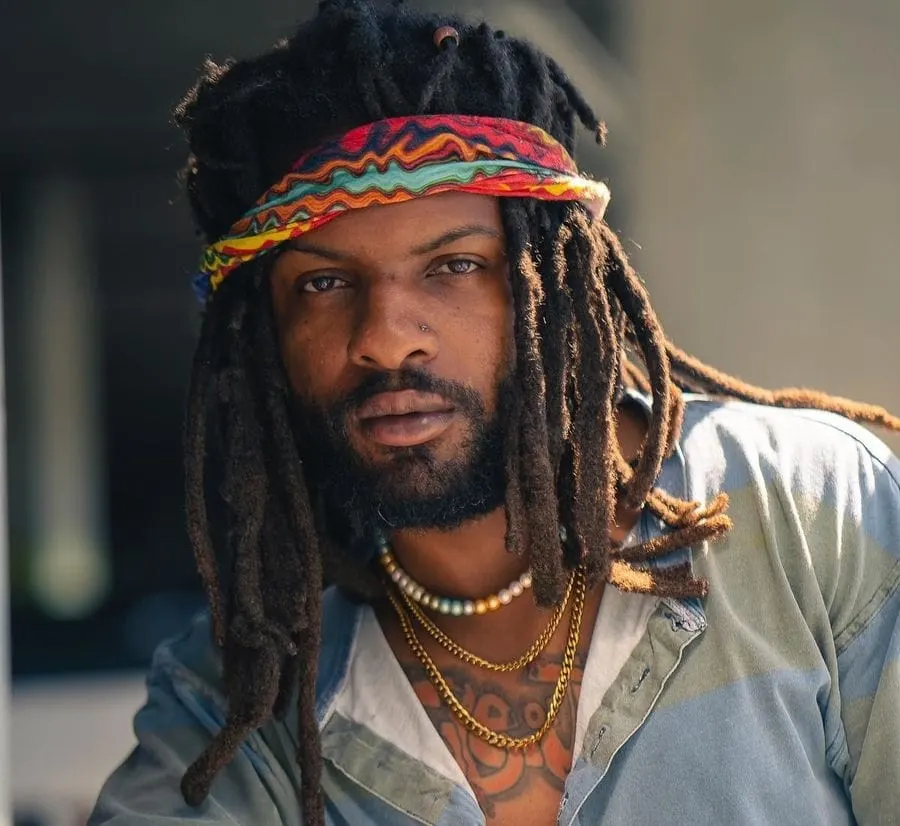
These locs look amazing, and they are beautifully styled with a scarf that you can wrap around your hair to keep the locs down.
Another thing that makes them look so good, is the lack of debris from the hair. Apple cider vinegar is your best friend when it comes to removing dirt and other unwanted particles from your scalp. Dilute it with water and use it to rinse your hair.
17. Spiky Freeform Locs

Certain phases of getting your dreads might not feel flattering. Most people who get a freeform hairstyle don’t have the patience to wait for the locks to drop off, however, be confident because this stage will come.
In the meantime, you should make the most out of the process and embrace your dreads, however, they look. Make sure they are healthy, clean debris with vinegar, and play around with cool hair decorations.
18. Middle Part
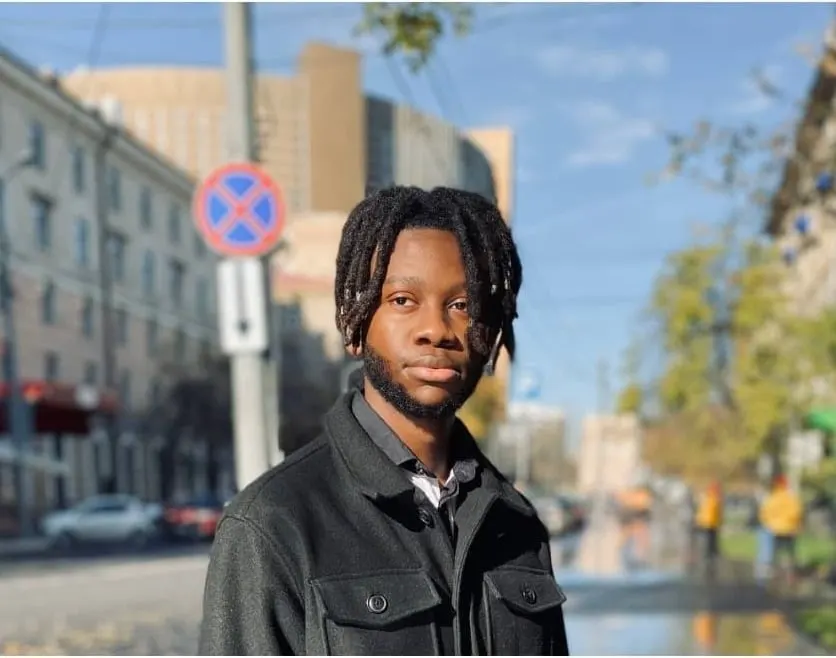
When embarking on this trip to long, thick freeform dreadlocks, it is ideal to do good research on what to expect, how your hair will look in all stages of growth, and how to take care of it.
Because no, it will not look just like the picture above. You will probably get that shape after a couple of years of growing and retwisting the roots.
19. Ultra Thick Dreads

If your locks seem to go in all directions and want to get a hairstyle that has some sort of shape, without renouncing your dreads, then why not try this lookalike mohawk?
Shave the sides, but don’t go over the ears, trim only the temple area. Grow a beard and keep it disconnected from your hair.
20. Platinum Blonde Tips
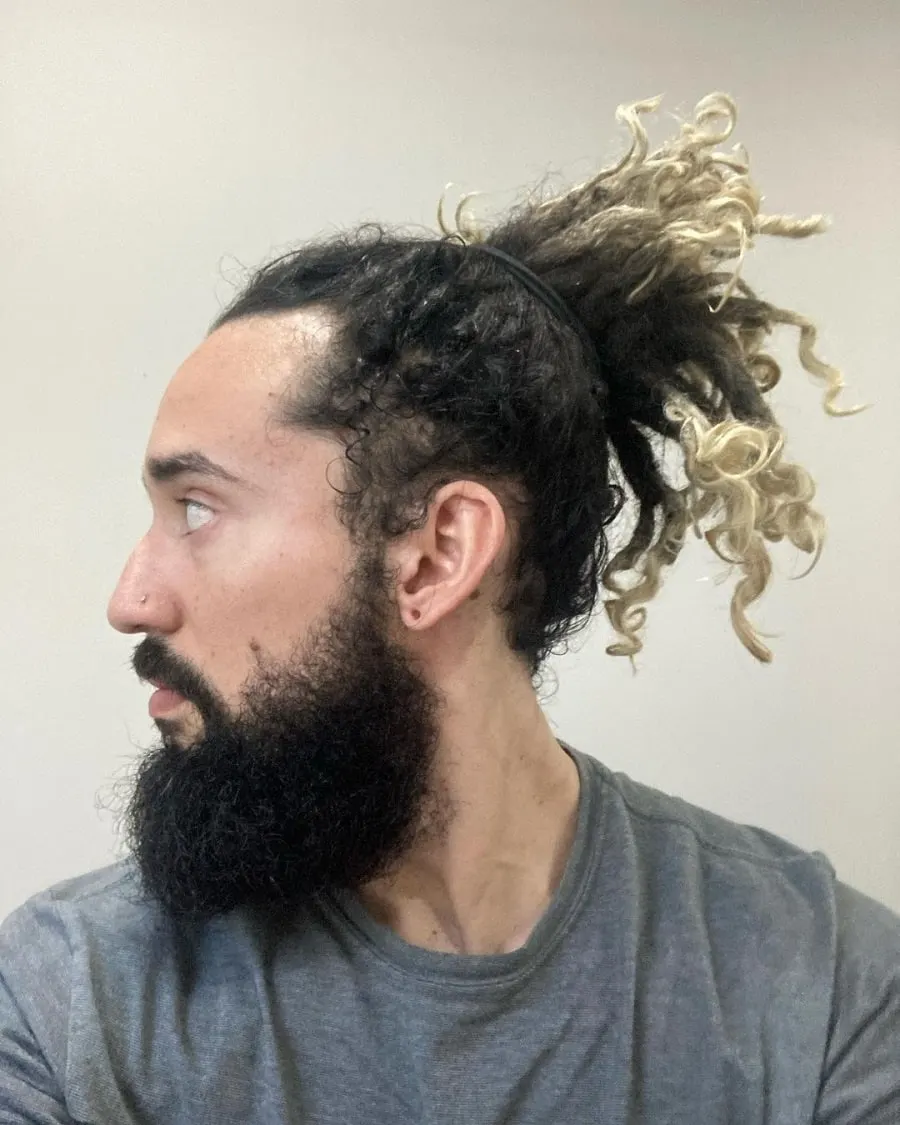
No matter the direction of your locs, you can always secure them in a ponytail with a large hair elastic that can include such large hair pieces.
Depending on how coarse or curly your hair is, you might need to redo the twisting if it doesn’t seem to tangle just the way you want it to.
21. Jamaican Locs with Headband
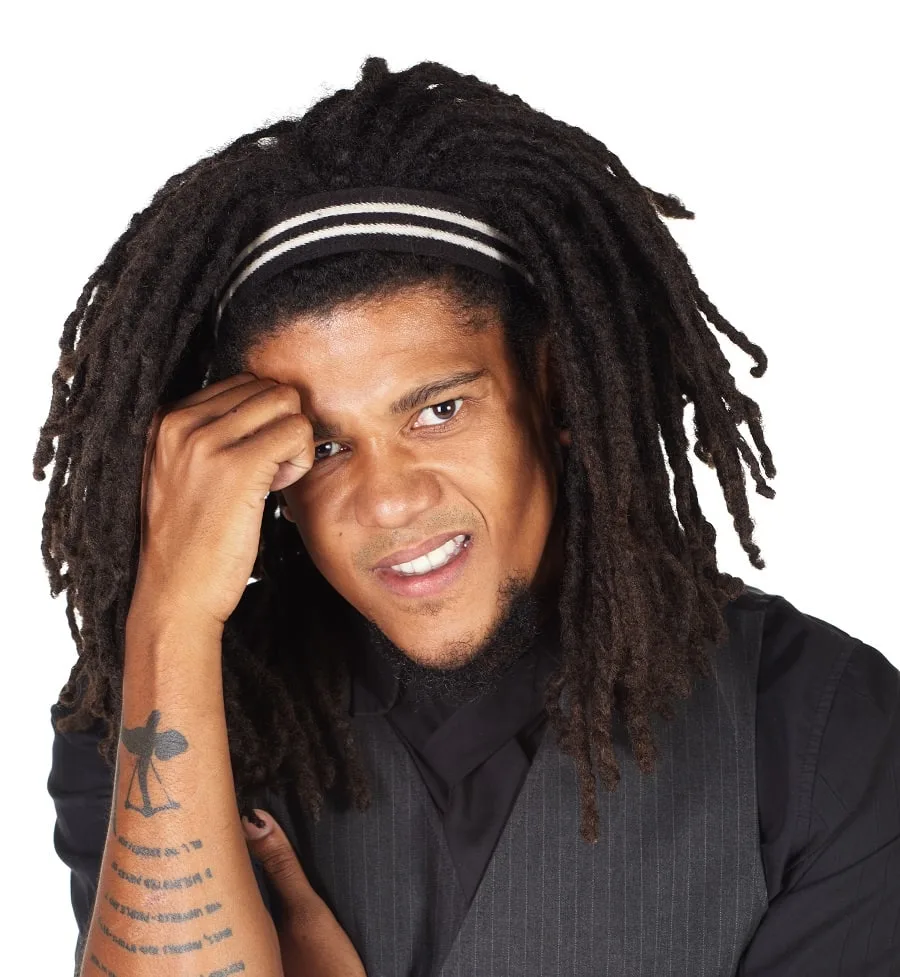
Freeform twists can be pulled to the back and secured with a wide elastic headband. And if you want to gain thin braids like these, you must select thin strands.
However, if this is your first time doing this freeform hairstyle, we recommend you find a good loctician with great reviews and experience, who doesn’t use any products when twisting the hair and will give you a good start.
22. Messy Locs

With this hairstyle, it’s all about embracing your locs no matter what direction they’re going. We know it can be troubling, especially if you are now transiting a messed up period in their growth.
The direction of your twists can also be set by your sleeping position and the way your dreads act overnight.
23. Thick and Thin Mix
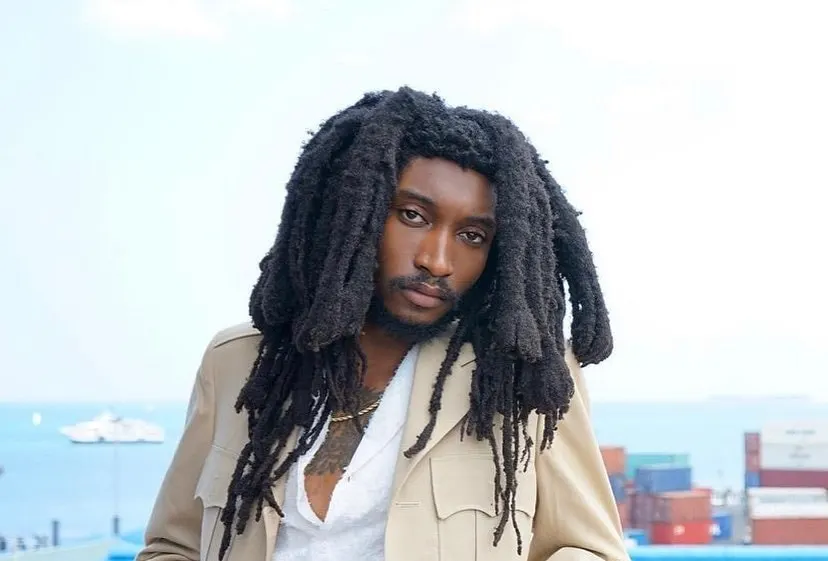
Over the years, you can experience matting or locs that naturally mix, creating a bigger piece. Some prefer to split them, others to cut them.
However, that doesn’t mean you need to do the same. Freeform locs are not about perfection or making them look all the same, but embracing your hair.
24. Row Parting

This spiky hair is styled to look like freeform twists. Without styling products you won’t be able to achieve such a well-defined shape for each loc.
The hairstyle has rows partings a temple fade and a defined hairline. The look is completed with a discontinued rich beard.
25. Messy Top Bun

These matting dreads look amazing at the roots, but some of the longer pieces seem to have some hair debris stuck in there. As you can see, it has some lint at the ends, which is the main concern for men with dreadlocks.
To avoid getting these pieces stuck in your hair, always use a satin pillowcase. Don’t wrap your head in t-shirts, scarves made out of cotton, or other materials that can cause lint to stick into your twists.
When you are growing freeform dreadlocks it might take months till you see them lock up. It can be a hard journey for those who are impatient but this hairstyle it’s not all about the final result but more about your passion for locs and natural hair. If you are just starting to grow your freeform locs, follow our tips and your hair will look healthy and beautiful during this journey!
